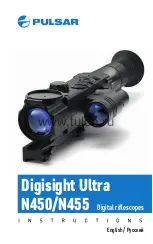
1
3600GTO - Remeshing the Worm Gear
Precise meshing of the worm gear to the worm wheel is important for peak performance of your mount. A gear mesh that
is too loose will result in backlash, which can be especially problematic in declination where precise reversal of direction is
required for excellent guiding. Gear mesh that is too tight can add unnecessary stress to the motors and can result in RA
tracking that is not smooth, and in Dec guider movements that are not precise.
This document provides instructions for proper gear meshing of the 3600GTO. There are some differences between
mounts from the first production run and mounts from subsequent production runs. Please note the version of your mount
and apply the following instructions accordingly. The first production run has serial numbers 36003 through 36029.
These instructions can be used to eliminate backlash as defined by Astro-Physics Inc., or to back off a worm mesh
that is deemed too tight. Backlash, in particular, is a term that is often misused to describe any sort of issue in a drive
train. Before we begin, we must narrow down our definitions. Backlash and play as we define them here are simply the
following:
Backlash (as defined by Astro-Physics):
Backlash is the result of a gap between the worm gear teeth and the worm wheel teeth. For clarity of communication, we
restrict the term backlash to ONLY apply to this worm gear to worm wheel mating. If movement can not be felt or seen in
the eyepiece when making tests that follow, the adjustments described here will not be needed. Please note that other
issues can give the false appearance of backlash when guiding or making fine adjustments with the direction buttons.
However, only the tests below will truly identify backlash as we define it.
Play (as defined by Astro-Physics):
The movement in an axis where there was none before. It can be felt as a back and forth movement of any gearing setup
or seen as an image shift in the eyepiece where there should be none. All backlash is evidenced by play, but not all play
is necessarily backlash in the way that we define it. For example, play can also be evidenced in reduction gears and in
bearing pre-loads. Please keep this distinction and these definitions in mind when communicating with Astro-Physics and
with the two Yahoo AP user’s groups.
Right Ascension Test for Backlash
The R.A. test is best done with the couonterwight shaft pointing down as it would in Park 2 or Park 3. Place your hand
near the end of the counterweight shaft and move the shaft back and forth as if to rotate the R.A. axis. This test can be
done with the mount alone on its pier or with the telescope and counterweights attached. The play you are looking for is
rather subtle. You will have a better sense of feel if you hold the counterweight shaft with your fingertips. Be sure that the
counterweight shaft is not loose and wiggling. Because of the geometry of a German Equatorial mount, it is rather difficult
to observe the movement in an eyepiece unless you have an assistant.
If no play is felt or seen, then you do not have an R.A. backlash problem.
If play is felt or seen in the telescope eyepiece when moving the shaft back and forth, proceed with the adjustment as
described below.
Declination Test for Backlash
Place your hand near the end of the telescope focuser, or at the end of the cradle plate, if the telescope is off the mount.
Be sure that whatever you are using is itself solid and flex-free. Move the telescope or plate back and forth as if to rotate
the Dec. axis. This test must be done with the assembled mount on its pier. Again, the play you are looking for is rather















